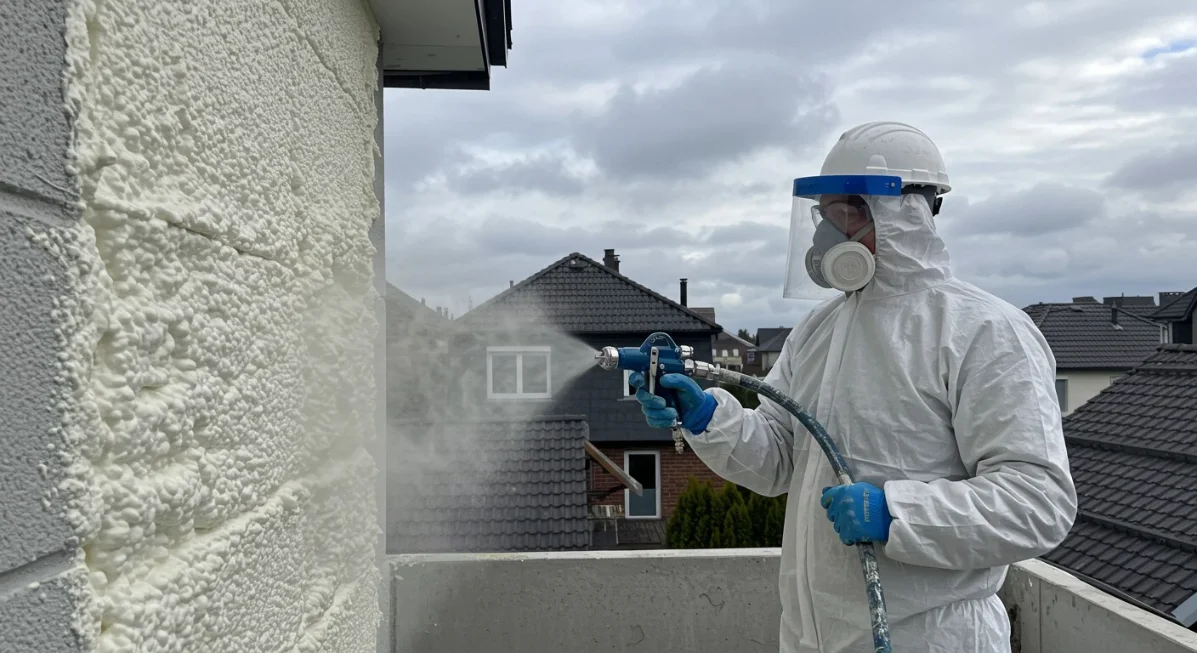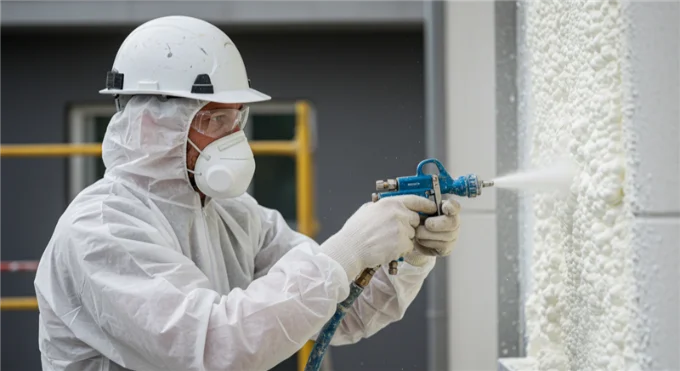
Spray foam insulation is recommended for exterior walls because it forms an airtight, moisture-resistant barrier that significantly improves thermal performance compared to traditional materials. Closed-cell spray foam, in particular, adds structural strength and delivers one of the highest R-values per inch. These qualities are especially relevant in Seattle’s mixed marine climate, where temperature swings, high humidity, and precipitation are routine.
Experts prefer spray foam for exterior applications due to its capacity to prevent heat loss, seal air leaks, resist mold, and eliminate cold spots. These performance advantages reduce energy use and extend building longevity. This article breaks down the specifics, practical insights, and performance comparisons to help you make an informed decision.
Industry expertise is based on field installation experience across residential and commercial projects in Seattle and surrounding regions.
| Feature | Spray Foam (Closed-Cell) | Spray Foam (Open-Cell) | Fiberglass Batts | Mineral Wool |
|---|---|---|---|---|
| R-Value (per inch) | 6.0 – 7.5 | 3.5 – 3.7 | 2.9 – 3.8 | 3.0 – 3.3 |
| Air Barrier | Yes | Yes | No | Partial |
| Water Resistance | High | Low | Low | High |
| Vapor Barrier | Yes | No | No | No |
| Structural Rigidity | High | Low | None | Moderate |
| Ideal for Exterior Walls | Yes | Sometimes | No | Moderate |
| Specification | Closed-Cell Spray Foam |
|---|---|
| Density | ~2.0 lb/ft³ |
| Perm Rating | <1 (acts as vapor barrier) |
| Expansion Rate | ~1:30 |
| Application Temperature Range | 40°F to 120°F |
| Ideal Application Thickness | 2″ – 3″ per pass |
| R-Value (3 inches) | ~21 |
Seattle’s damp, marine-influenced environment demands insulation that resists moisture and provides a stable thermal envelope. Closed-cell spray foam helps prevent:
Bonus Tip: In coastal zones with mixed humidity levels, a continuous exterior layer of closed-cell spray foam can serve as both insulation and moisture barrier, reducing the need for additional WRB systems.

Installers in King, Snohomish, and Pierce counties report that applying spray foam to exterior sheathing helps eliminate air gaps commonly left by rigid foam or batt insulation. Success depends on surface prep, temperature, and foam chemistry consistency.
Bonus Tip: Avoid applying foam over damp or cold sheathing (<40°F). Doing so can compromise adhesion and reduce insulation effectiveness.
Is spray foam safe to use on exterior walls in rainy climates?
Yes, closed-cell spray foam resists water absorption and adds structural integrity, making it effective in high-moisture environments like Seattle.
How thick should spray foam be on exterior walls?
Closed-cell foam is usually applied in 2” passes. Total thickness depends on code and performance goals, typically 3-5″.
Can spray foam replace house wrap or vapor barriers?
Closed-cell foam can function as both, depending on the assembly design and local code.
How long does it take to apply spray foam on exterior walls?
Application timing varies, but standard residential projects can be completed in 1-2 days.
For accurate recommendations on exterior wall insulation based on your property’s structure, local climate, and energy goals, contact the team at Cascadia Spray Foam of Seattle.
Phone: (425) 386-3500 Email: [email protected]
Does spray foam insulation degrade over time?
Closed-cell spray foam maintains most of its insulating value over decades when properly installed and protected.
Can spray foam trap moisture inside walls?
Not if installed correctly. Closed-cell foam forms a vapor barrier, but assemblies must be designed to manage interior humidity.
Is spray foam environmentally friendly?
New formulations use low-GWP blowing agents, reducing environmental impact compared to earlier versions.
Can I install spray foam in winter?
Yes, but substrate temperatures must remain within manufacturer specifications (above 40°F) for proper adhesion.
Does closed-cell spray foam add strength to wall assemblies?
Yes. Its rigidity improves structural shear and racking resistance in both residential and commercial buildings.